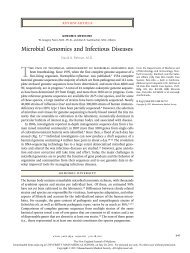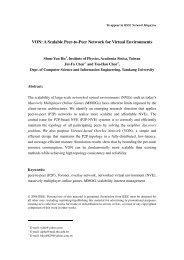Oliver Strunk: The Elements of Style - Evernote
Oliver Strunk: The Elements of Style - Evernote
Oliver Strunk: The Elements of Style - Evernote
You also want an ePaper? Increase the reach of your titles
YUMPU automatically turns print PDFs into web optimized ePapers that Google loves.
<strong>Oliver</strong> <strong>Strunk</strong>: <strong>The</strong> <strong>Elements</strong> <strong>of</strong> <strong>Style</strong><br />
1923, © 1969 by Henry Holt and Company, LLC. Reprinted by permission <strong>of</strong> Henry Holt and Company, LLC.)<br />
I have perceived that to be with those I like is enough,<br />
To stop in company with the rest at evening is enough,<br />
To be surrounded by beautiful, curious, breathing,<br />
laughing flesh is enough ...<br />
file:///Users/aradke/staticdoc/english/etes_htm/etes_htm.htm<br />
09/20/2006 05:06 PM<br />
Because <strong>of</strong> the characteristic styles, there is little question about identity here, and if the situations were<br />
reversed, with Whitman stopping by woods and Frost by laughing flesh (not one <strong>of</strong> his regularly scheduled<br />
stops), the reader would know who was who.<br />
Young writers <strong>of</strong>ten suppose that style is a garnish for the meat <strong>of</strong> prose, a sauce by which a dull dish is<br />
made palatable. <strong>Style</strong> has no such separate entity; it is nondetachable, unfilterable. <strong>The</strong> beginner should<br />
approach style warily, realizing that it is an expression <strong>of</strong> self, and should turn resolutely away from all<br />
devices that are popularly believed to indicate style — all mannerisms, tricks, adornments. <strong>The</strong> approach to<br />
style is by way <strong>of</strong> plainness, simplicity, orderliness, sincerity.<br />
Writing is, for most, laborious and slow. <strong>The</strong> mind travels faster than the pen; consequently, writing<br />
becomes a question <strong>of</strong> learning to make occasional wing shots, bringing down the bird <strong>of</strong> thought as it<br />
flashes by. A writer is a gunner, sometimes waiting in the blind for something to come in, sometimes<br />
roaming the countryside hoping to scare something up. Like other gunners, the writer must cultivate<br />
patience, working many covers to bring down one partridge. Here, following, are some suggestions and<br />
cautionary hints that may help the beginner find the way to a satisfactory style.<br />
1. Place yourself in the background.<br />
Write in a way that draws the reader's attention to the sense and substance <strong>of</strong> the writing, rather than to the<br />
mood and temper <strong>of</strong> the author. If the writing is solid and good, the mood and temper <strong>of</strong> the writer will<br />
eventually be revealed and not at the expense <strong>of</strong> the work. <strong>The</strong>refore, the first piece <strong>of</strong> advice is this: to<br />
achieve style, begin by affecting none — that is, place yourself in the background. A careful and honest<br />
writer does not need to worry about style. As you become pr<strong>of</strong>icient in the use <strong>of</strong> language, your style will<br />
emerge, because you yourself will emerge, and when this happens you will find it increasingly easy to break<br />
through the barriers that separate you from other minds, other hearts — which is, <strong>of</strong> course, the purpose <strong>of</strong><br />
writing, as well as its principal reward. Fortunately, the act <strong>of</strong> composition, or creation, disciplines the<br />
mind; writing is one way to go about thinking, and the practice and habit <strong>of</strong> writing not only drain the mind<br />
but supply it, too.<br />
2. Write in a way that comes naturally.<br />
Write in a way that comes easily and naturally to you, using words and phrases that come readily to hand.<br />
But do not assume that because you have acted naturally your product is without flaw.<br />
<strong>The</strong> use <strong>of</strong> language begins with imitation. <strong>The</strong> infant imitates the sounds made by its parents; the child<br />
imitates first the spoken language, then the stuff <strong>of</strong> books. <strong>The</strong> imitative life continues long after the writer<br />
is secure in the language, for it is almost impossible to avoid imitating what one admires. Never imitate<br />
consciously, but do not worry about being an imitator; take pains instead to admire what is good. <strong>The</strong>n<br />
when you write in a way that comes naturally, you will echo the halloos that bear repeating.<br />
3. Work from a suitable design.<br />
Page 51 <strong>of</strong> 87

















